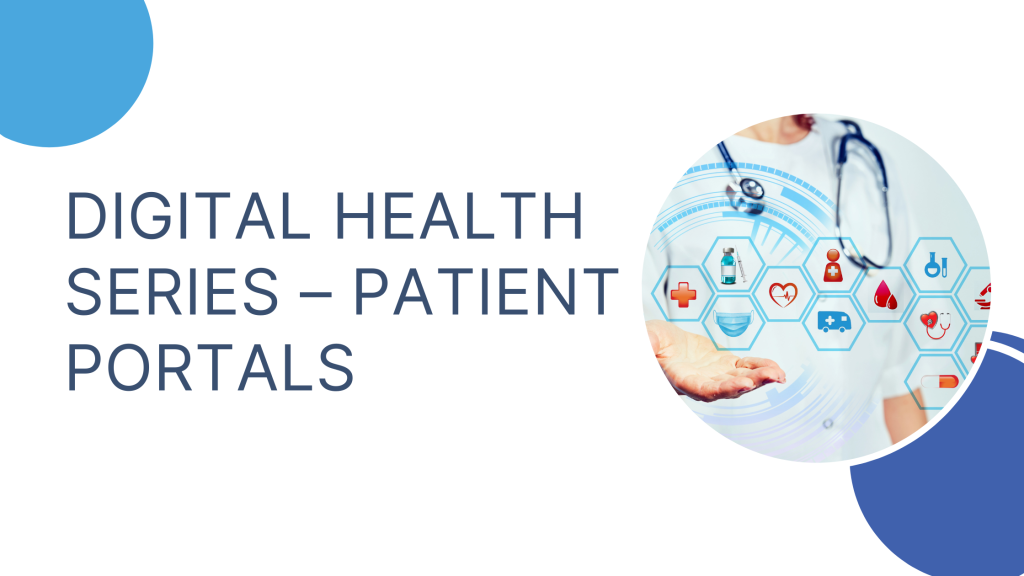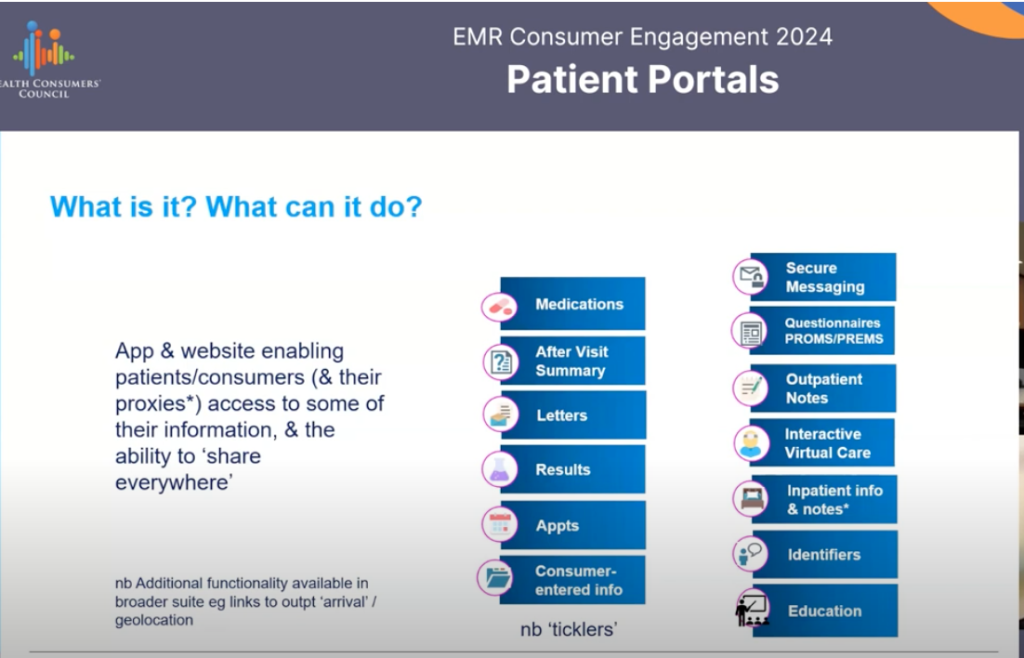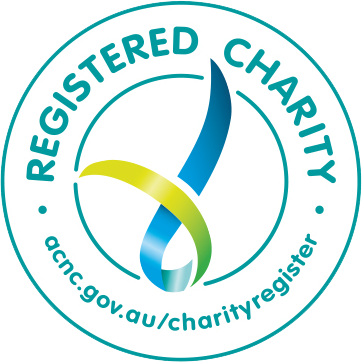
By Pip Brennan, Electronic Medical Record Consumer Reference Group Convenor
The Health Consumers’ Council was funded by the WA Health Electronic Medical Record (EMR) Program to convene three consumer webinars and four Consumer Reference Group meetings between January and June 2024. The purpose of this work is to build on the EMR Consumer Charter that was co-designed developed in 2021.
In this interim period prior to developing a tender for a statewide EMR, HCC aims to upskill a group of supported, networked consumers and empower us to deliberate on key aspects of the EMR. We have also created several videos on key topics. We are sharing the learnings from this work as widely as we can, as WA continues its progress towards obtaining EMR in around three years’ time.
Patient Portals – what do consumers need to know?
The Patient Portal is the part of an Electronic Medical Record that we can see and interact with.

It was the focus of the EMR Consumer Reference Group meeting in February 2024. Prior to the meeting, a list of patient portal resources were provided for the Group to look at:
- Health Hub portal | The RMH- Epic
- My RCH Portal : About My RCH Portal – Epic
- Alfred Health Patient Portal – Cerner
- Athena Patient portal
- Relay Health Patient portal
- Bolton NHS – Allscripts
- The Villages Health – Athena Health
- Calderdale and Huddersfield Patient portal- Cerner
- MyCare UCLH – a secure online patient portal -Epic
- FollowMyHealth Patient Portal Walk-Through – Athena
At the meeting, we interviewed Liz Cashill and Consumer Representative Mary Oti from Royal Melbourne Hospital. They began implementing their patient portal in their EMR in 2020 and share key insights about what a patient portal is, how it works in practice, and what we need to think about as consumer representatives. You can watch the video replay below or read the transcript here.
WA’s Consumer priorities for a Patient Portal
After the presentation, the EMR Consumer Reference Group discussed our priorities for the future WA Health EMR Patient Portal. This is a summary which was provided to the WA Health EMR Program:
Consumer involvement: Consumers are partners throughout all stages of scoping, procurement, development and rollout of a patient portal.
Consumer centred: Base the design around us as consumers, as we move all across the system and want to be able to use one entry point for all our care. It must integrate and connect with adjunct and related systems; it needs to work in harmony with My Health Record. A priority for consumer centred care includes recording of preferred pronouns, name etc as part of the patient portal.
Consumer empowerment: The portal must support partnering with our health care team to achieve the best possible health outcomes. Specifically this includes two-way communication with an ability to view, edit, download and print information about us. We need to be linked to knowledge and resources to navigate our care journey, with easy and intuitive navigation features.
Transparency, Choice and Control: this would look like there being controls for sharing of information need to be in place as they are for My Health Record, and understanding
Equity of access: we need to be supported to use the patient portal if we wish, but to receive the same standard of care if we don’t choose to use it. We would also like to see system flags to support equitable care,. e.g. when someone is travelling from the country. Other examples include a flag if there is a Disability Care Plan so staff are supported to provide safe care to someone who for example isn’t verbal. Flags to support trauma informed care are also key. A key consideration too is a patient portal available in languages other than English.
Proxy access is important with protections and permissions. For example, accessing health care for an adult child with a disability in the absence of guardianship –e.g. NDIS offer “common sense” choices – where people don’t need to get Guardianship to access their adult child’s records. We can sometimes have a bias towards the presumption of abuse e.g. in carers for people with disability, people who are frail aged.




